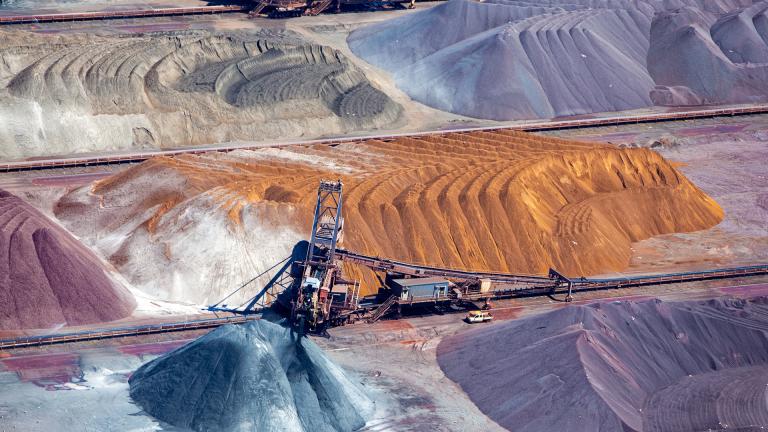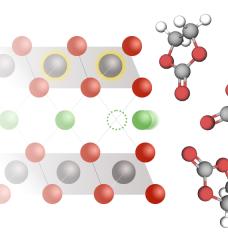
Efficient extraction and processing of ores into metals are fundamental to several clean energy transition technologies. Metals such as copper, nickel, indium, platinum, and cobalt are vital for wind turbines, solar panels, fuel cells, energy storage systems, and electric vehicles. However, the production of certain critical metals faces challenges such as high processing costs and supply chain constraints. This research investigates the economic viability and cost dynamics of single versus joint metal production, aiming to provide insights that can optimize mineral extraction and processing for the energy transition.
To analyze the cost dynamics of single and joint metal production, we develop a theoretical model grounded in optimization theories. The model characterizes the average cost of processing ore for two types of firms: single metal producers and joint metal producers. Single metal producers process ore to extract one metal, while joint metal producers extract two or more metals from the same ore.
The model incorporates several parameters, including:
Per unit mining and processing costs
Taxes per unit of ore
Total factor productivity
Metal demand
Volume of ore processed
We use constrained optimization to derive conditions under which joint metal production can offer cost savings compared to single metal production. The analysis includes deriving conditional ore demand and characterizing optimized average costs for both types of firms. The model highlights the role of relative output elasticities, which measure how output changes with respect to input changes, in determining production efficiency and average costs. Higher relative output elasticity can lead to lower average costs, particularly in joint metal production.
In addition, the theoretical models are complemented with an empirical analysis based on data from 427 mining projects worldwide. This dataset includes information on the average cost of processing ore, the volume of ore processed, and the types of metals produced. Among these projects, 62 are joint metal producers, producing combinations such as copper-cobalt (Cu-Co), cobalt-nickel (Co-Ni), and copper-nickel (Cu-Ni). The remaining 365 sites are single metal producers.
By comparing site-level average costs across different countries, metal types, and producer types, we interpret patterns in the data using the solutions from the constrained optimization model. The empirical analysis reveals that joint metal producers often face higher average costs compared to single metal producers. However, under certain conditions, joint production can achieve cost efficiencies.
We find that several factors influence the average costs of processing ores:
Per Unit Costs: Higher per unit mining and processing costs increase the average cost for both single and joint metal producers.
Taxes: Taxes per unit of ore significantly impact cost dynamics, especially for single metal producers.
Total Factor Productivity: Improvements in total factor productivity can reduce average costs, benefiting joint metal producers more due to their complex operations.
Metal Demand: Fluctuations in metal demand affect pricing and, consequently, cost structures. High demand can drive up prices, impacting cost efficiency.
Volume of Ore Processed: Larger volumes of ore processed can lead to economies of scale, reducing average costs for both types of producers.
The theoretical and empirical analyses show that single metal producers generally have lower average costs compared to joint metal producers. This is attributed to the simpler processing requirements and established technologies for base metals like copper. However, joint metal production can achieve cost savings when the relative output elasticity of the ore is high. In such cases, the efficiency gains from processing multiple metals can offset the higher initial costs.
In fact, joint metal producers experience more nuanced cost variations tied to changing per unit cost parameters, metal demand, ore volume processed, and total factor productivity. The model highlights how higher relative output elasticity of ore can lead to lower average costs, making joint production economically viable under such specific conditions.
These findings have significant implications for production decisions and supply chain management. Mining and metallurgical firms can use these insights to decide whether and when to adopt single versus joint production strategies based on the relative output elasticities of the ores for different metals. Understanding factors that influence average costs can help producers optimize their cost structures.
In terms of policy implications, industry stakeholders might employ several strategies to address the higher average costs faced by joint metal producers. From investing in Research and Development (R&D) for innovative mining and metal refining technologies, to information sharing within industry associations, using them as platforms for sharing best practices and knowledge, driving improvements in cost efficiency. Finally, government support could play a crucial role, with policies and programs supporting innovation and cost efficiency in mining technology, to enhance the competitiveness and sustainability of the sector.






